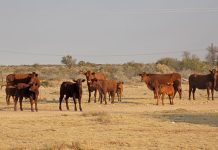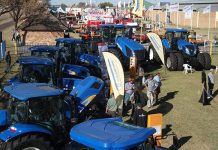Food prices are emotional issues. When food price inflation peaked at 19,8% in 2002, President Mbeki appointed a commission to investigate the cause, under the able chairmanship of Prof Johann Kirsten. Kirsten published a massive report that included various recommendations. With the exception of the recommended establishment of a Food Pricing Monitoring Committee, very little was done about these – mainly because food inflation decreased sharply during 2003 as the rand recovered. Since 2007, food inflation has become an issue again. High food inflation isn’t new. July 1992, it reached 30,5%. peak of 19,8% in October 2002 occurred after a period of relatively low inflation, and another period of low inflation followed until April 2006. Since then food inflation has increased sharply to peak at 19,2% in August 2008. In September 2008 it was slightly lower at 18,3%.
There are positive signs of lower food inflation in coming months. The slowdown in the international economy lowered commodity prices, including so-called soft commodity prices. For instance, the CBOT maize price decreased by 38% in four months and New Zealand skimmed milk powder by 50% since July 2007. This trend is also evident in input prices, where the lower international oil price has slowed down the increase in fertiliser prices. O n the production level, agricultural producer prices peaked in October 2007 and slowed down to 0,7% in September 2008. On the manufacturing level, food prices have increased by a hefty 19,6% year-on-year, but only 0,9% month-on-month.
The slowdown in agricultural prices will result in lower consumer prices. What causes agricultural food inflation? he 2007 Food Cost Review lists and discusses a few domestic factors that impact on food prices: population growth is faster than • agricultural production growth, higher demand and low production push prices towards import parity, rising input costs, price collusion, lack of investment both on-farm and in research and development, liberal trade policies linking local prices to international prices. Lower production is caused by climatic factors, lack of availability and quality of water, lack of investment in the sector and uncertainty created by the poor performance pertaining to the implementation of land reform and other sociopolitical plans.
If we produce less than we need, prices move towards import parity and if we produce more, they move towards export parity. Import parity is always higher than export parity and thus lower production nearly always results in higher prices.
Government’s plans
Government could not ignore the 2007 Food Cost Review’s analysis of the factors that cause high food inflation. A recent Business Day article quotes agriculture director-general Njabulo Nduli on government’s plans to counter high food prices. It proposes increases in import tariffs on some products to protect local agriculture. This is a positive change in attitude. However, the draft agricultural trade and tariff policy documents are still lying on a desk somewhere in either the Department of Agriculture or the of Trade and Industry. Without them, we can’t proceed in an orderly way with tariffs. Strategic reserves of grain are again part of government’s plans. In this regard, it would do well to reread Kirsten’s 2002 report.
The commission did not recommend this approach as the unintended effects and huge logistical problems would make it difficult to implement. new idea is the so-called agro-parks, which will use a single product to produce various food products. The example given is a park where mangoes are processed into various products like fruit juice and chutney. Why this type of system will work better than the current one where factories process various types of fruit is not clear.
Assessing government’s plans
Higher import tariffs could play a role in supporting local agricultural industries and might increase production. However, the other plans will probably remain at drawing board stage indefinitely. f government wants to increase food production, it will have to address the issue of agricultural investment. Investor confidence must be restored, the erosion of the willing-buyer, willing-seller principle must stop and the land claim issue must be settled. This will encourage commercial farmers to invest in increased production. Government’s research and development (Rx) spending is far below even developing country standards. Agriculture needs D to enable it to produce enough food for the growing population, while money spent this way will benefit the poor, who use a large part of their income to buy food. Dr Koos Coetzee is an agricultural economist at the MPO. All opinions expressed are his own and do not reflect MPO policy. |fw








